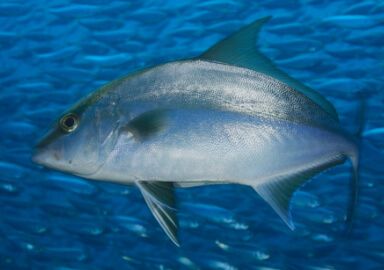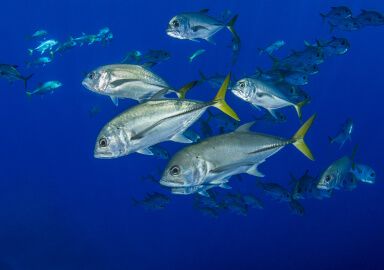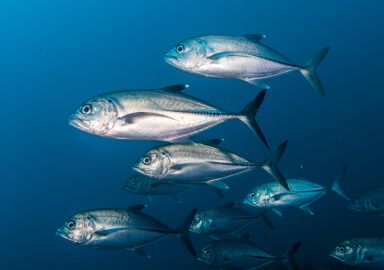Jack Crevalle
Compared to similar species, the jack crevalle’s hape is relatively short and stumpy, but it is a powerful top predator and can grow to a substantial size.
View 75 listings
75
listings
–
price starting from
7
countries
–
to the nearest trip
Where and When?
Jack crevalle are a fish of the Atlantic ocean and surrounding seas, including the Mediterranean and Caribbean. They are to be found in tropical and sub-tropical waters and in the western Atlantic the range is from Portugal in the north to Angola in the south. On the eastern edge of this ocean the range extends from Nova Scotia, in the north, southwards to Uruguay. It is a popular recreational angling species in many countries and there are also substantial commercial fisheries in Portugal and several South American countries.
Most countries within their range have many resorts from which they may be caught as well as suitable areas where shore anglers may catch them. They may be caught in estuaries and lagoons, from beaches and piers as well as from charter boats. Most fish are caught during the summer months and in many areas jack crevalle seem to be relatively inactive, and difficult to catch, in winter.
About Jack Crevalle
The jack crevalle, Caranx hippos, was the first described species of the top game angling Carangidae family. One of the largest members of its group, jack crevalle can grow to about 1.24 meters (4 ⅓ feet) with a mass of approximately 32 kg (70 lbs) in a maximum lifetime of at least 17 years. They spawn throughout the year and there isn't any considerable differences between the sexes. They feed mostly, about 80 to 90 percent, on other fish but will also prey on invertebrates such as squids and shrimps.
They have simple, but lethal, sharp teeth and can bite “chunks” out of other fish and then return to consume the remains. Jack crevalle often form shoals of similar sized fish but, particularly as they grow in size, they often hunt singly or in pairs. They are “narrow” fish with fairly small but immensely powerful tail fins that enable them to reach high speeds for short periods. Although mostly a marine species, larger specimens may move quite far up suitable rivers while juveniles often remain for extended periods in estuaries and bays.
How to Catch?
As jack crevalle may be found from up fairly far rivers to the open ocean and in shallow or deep water there are many and very varied ways of fishing for them. They are generally regarded as a powerful and “dirty” fighting fish and, while large specimens may be targeted using heavy tackle, light tackle angling for smaller fish can be excellent and memorable sport. They can be taken on live and dead bait, artificial lures and jigs and, increasingly popularly, on fly. The most suitable angling method usually depends on the size of fish targeted, area, circumstances and the preferences of the angler.
Although Jack crevalle can find food by smell, they are more often “ambush” predators using eyesight and so spinning and fly fishingcan produce exciting and rewarding results. The species can often take a bait extremely rapidly and literally explode onto the lure, bait or fly from an otherwise tranquil scene. Fly fishing and spinning with medium tackle can be exceptionally thrilling, but nerve wracking, as a hooked jack crevalle will very often immediately make a bee line for obstructions or cover where the angler’s line can become entangled and then break.











